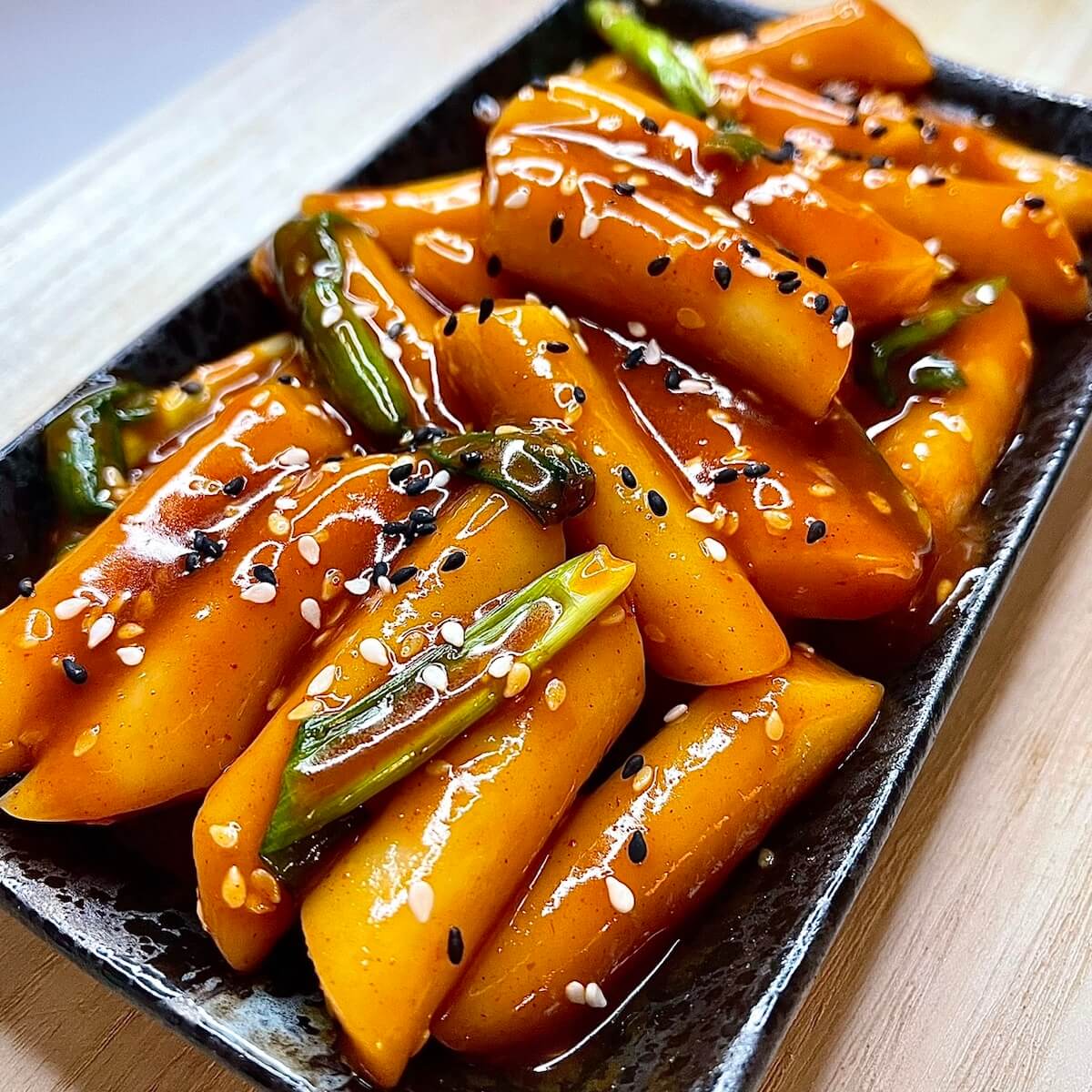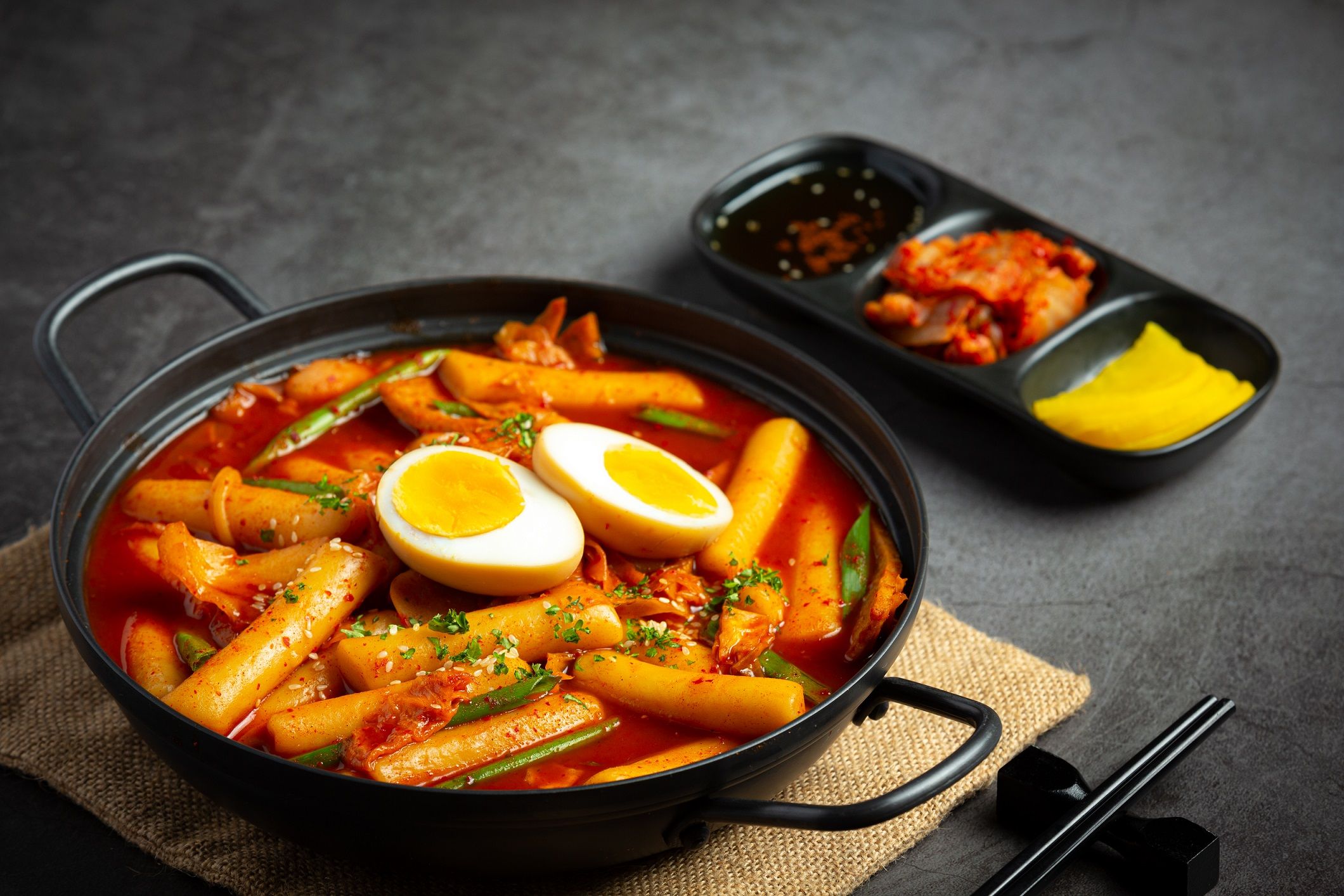Embark on a tantalizing journey into the world of halal tteokbokki, a beloved Korean dish that tantalizes taste buds with its spicy and savory flavors. Whether you’re a seasoned culinary enthusiast or a novice cook seeking halal-friendly options, this comprehensive guide will equip you with the knowledge and techniques to create an authentic and delectable halal tteokbokki experience.
As we delve into the intricacies of this dish, we’ll explore the halal ingredients that form its foundation, providing you with a clear understanding of how to identify and source them. Our step-by-step cooking guide will empower you to recreate this Korean delicacy in your own kitchen, ensuring that every bite adheres to halal dietary guidelines.
Tteokbokki Recipe

Halal Ingredients
Adhering to Islamic dietary restrictions, it is essential to use halal ingredients in tteokbokki preparation. Halal certification ensures that ingredients comply with Islamic law, guaranteeing their permissibility for consumption.
Identifying halal ingredients involves checking for certification labels from reputable Islamic organizations. These labels provide assurance that ingredients have undergone rigorous inspections and meet halal standards.
Local markets and online retailers often stock a wide range of halal-certified ingredients, making it convenient to source them. When purchasing online, verify the authenticity of certification labels to ensure genuine halal products.
- Tteokbokki rice cakes: Look for rice cakes with halal certification.
- Gochujang (Korean chili paste): Choose gochujang that is certified halal.
- Gochugaru (Korean chili powder): Opt for halal-certified gochugaru.
- Soy sauce: Use halal-certified soy sauce.
- Sugar: Regular granulated sugar is generally halal.
- Green onions: Fresh green onions are naturally halal.
- Sesame seeds: Choose halal-certified sesame seeds.
Step-by-Step Halal Tteokbokki Cooking s
Preparing halal tteokbokki requires careful adherence to dietary guidelines. This step-by-step guide will provide precise instructions, ensuring a flavorful and authentic dish that complies with halal requirements.
Ingredients
To prepare halal tteokbokki, you will need the following ingredients:
- 1 pound halal rice cakes (tteokbokki)
- 1/2 cup halal gochujang (Korean chili paste)
- 1/4 cup halal gochugaru (Korean chili powder)
- 1/4 cup soy sauce
- 2 tablespoons sugar
- 1 tablespoon halal fish sauce
- 1 tablespoon halal sesame oil
- 1/2 cup water
- 1/2 cup halal green onions, chopped
- 1/2 cup halal sesame seeds
Cooking Instructions
Follow these step-by-step instructions to prepare halal tteokbokki:
- In a large pot or skillet, combine the rice cakes, gochujang, gochugaru, soy sauce, sugar, fish sauce, sesame oil, and water. Bring to a boil over medium heat.
- Reduce heat to low, cover, and simmer for 15-20 minutes, or until the rice cakes are cooked through and the sauce has thickened.
- Stir in the green onions and sesame seeds. Serve hot.
Tips
For a spicier tteokbokki, add more gochugaru to taste.
If the sauce becomes too thick, add a little bit of water.
To make the tteokbokki ahead of time, cook it according to the instructions and then let it cool completely. Store it in an airtight container in the refrigerator for up to 3 days.
Variations and Modifications for Halal Tteokbokki
Halal tteokbokki offers a versatile canvas for culinary creativity. From vegetarian to vegan and gluten-free options, there are variations that cater to diverse dietary preferences and cultural influences.
These variations not only enhance the accessibility of this beloved dish but also reflect the cultural significance and regional differences associated with tteokbokki. Here are some popular variations and their respective modifications:
Vegetarian Tteokbokki
- Substitute meat: Replace the usual beef or pork with vegetarian-friendly options such as tofu, tempeh, or seitan.
- Vegetable broth: Use vegetable broth instead of meat broth to create a flavorful base.
- Additional vegetables: Add extra vegetables like bell peppers, carrots, or mushrooms to enhance the nutritional value and texture.
Vegan Tteokbokki
- Dairy-free: Opt for plant-based milk or cream instead of dairy milk.
- Egg-free: Use cornstarch or arrowroot powder as a thickener instead of eggs.
- Fish sauce alternative: Replace fish sauce with soy sauce or a combination of soy sauce and vegetable broth for umami flavor.
Gluten-Free Tteokbokki
- Rice flour: Use rice flour instead of wheat flour to make the tteokbokki rice cakes.
- Gluten-free gochujang: Find gluten-free gochujang paste to ensure the dish is suitable for individuals with gluten intolerance.
- Tamari sauce: Use tamari sauce as a substitute for soy sauce, as it is naturally gluten-free.
These variations showcase the adaptability of halal tteokbokki, making it a dish that can be enjoyed by individuals with diverse dietary preferences and cultural backgrounds. By embracing these modifications, you can create a delicious and inclusive tteokbokki experience.
Halal Tteokbokki Presentation and Serving Suggestions
Presenting halal tteokbokki in a visually appealing and authentic manner enhances the dining experience. Here are some traditional and creative ways to serve this dish:
Traditionally, halal tteokbokki is served in a shallow bowl or plate. The tteokbokki is arranged in a mound, with the sauce poured over it. The dish is often garnished with sesame seeds, green onions, and boiled eggs.
Garnishes and Accompaniments
Garnishes and accompaniments play a crucial role in elevating the flavors and presentation of halal tteokbokki. Some popular options include:
- Sesame seeds: These add a nutty flavor and a crunchy texture.
- Green onions: These provide a fresh, herbaceous flavor and a pop of color.
- Boiled eggs: These add a protein element and a creamy texture.
- Kimchi: This fermented cabbage dish adds a spicy and tangy flavor.
- Cheese: Grated or melted cheese adds a rich and creamy flavor.
Side Dishes
Side dishes can complement the flavors of halal tteokbokki and create a more balanced meal. Some popular options include:
- Rice: Rice is a classic side dish for tteokbokki, as it helps to soak up the sauce.
- Noodles: Noodles, such as ramen or udon, can be added to the tteokbokki for a more filling meal.
- Vegetables: Vegetables, such as carrots, potatoes, or mushrooms, can be added to the tteokbokki for a healthier option.
Cultural Etiquette and Customs
The serving and consumption of tteokbokki in different regions may vary based on cultural etiquette and customs. In Korea, tteokbokki is often served as a street food or a casual meal. It is typically eaten with chopsticks and a spoon.
In some regions, it is customary to share a bowl of tteokbokki with others.
Nutritional Value and Health Benefits of Halal Tteokbokki

Halal tteokbokki is a nutritious dish that offers a range of essential nutrients. It is a good source of carbohydrates, providing energy for the body. Additionally, it contains a moderate amount of protein, which is essential for building and repairing tissues.
Macronutrient Composition
- Calories: 300-400 calories per serving
- Carbohydrates: 50-60 grams per serving
- Protein: 10-15 grams per serving
- Fat: 10-15 grams per serving
Micronutrient Composition
Halal tteokbokki also provides several vitamins and minerals, including:
- Vitamin C: An antioxidant that helps protect the body from damage
- Vitamin A: Essential for vision and immune function
- Calcium: Important for bone health
- Iron: Necessary for red blood cell production
Health Benefits
Consuming halal tteokbokki in moderation can offer several health benefits:
- Provides energy: The carbohydrates in tteokbokki provide energy for the body.
- Builds and repairs tissues: The protein in tteokbokki is essential for building and repairing tissues.
- Supports immune function: The vitamins and minerals in tteokbokki, such as vitamin C and vitamin A, support immune function.
- Promotes bone health: The calcium in tteokbokki is important for bone health.
Moderation and Portion Control
While halal tteokbokki is a nutritious dish, it is important to consume it in moderation. It is high in calories and fat, so excessive consumption can lead to weight gain and other health issues. It is recommended to consume tteokbokki as part of a balanced diet, and to control portion sizes to avoid overeating.
Halal Tteokbokki in Global Cuisine and Culture
Halal tteokbokki has gained widespread popularity beyond South Korea, captivating taste buds in various countries and cultures. Its versatility and adaptability have led to unique interpretations and variations, reflecting the diverse culinary traditions of different regions.
Global Reach of Halal Tteokbokki
Halal tteokbokki has become a beloved dish in countries with significant Muslim populations, such as Indonesia, Malaysia, and Singapore. In Indonesia, it is known as “tteokbokki halal” and is often served with additional toppings like fried shallots and crispy wontons.
In Malaysia, it is commonly found in food courts and night markets, with variations that incorporate local flavors, such as the addition of coconut milk or tamarind paste.
Cultural Adaptations and Variations
As halal tteokbokki spread across the globe, it encountered diverse culinary traditions and preferences, resulting in a range of adaptations and variations. In some regions, it has been modified to suit local palates, with varying levels of spiciness and the incorporation of different ingredients.
For example, in Japan, halal tteokbokki is often milder in flavor and may include toppings like cheese or seaweed flakes. In the Middle East, it has been influenced by Arabic cuisine, with the addition of spices like cumin and coriander.
Significance in Different Communities
Halal tteokbokki has become an integral part of many Muslim communities, serving as a bridge between cultures and generations. In Indonesia, it is a popular dish for gatherings and celebrations, often shared among family and friends. In Malaysia, it is a staple street food, enjoyed by people from all walks of life.
The availability of halal tteokbokki has enabled Muslims to enjoy this beloved dish without compromising their dietary restrictions, fostering a sense of inclusion and belonging.
Last Recap
From its humble origins in Korea to its global recognition, halal tteokbokki has captivated hearts and palates worldwide. As you embark on your culinary adventure, remember that moderation and portion control are key to enjoying this delicious dish as part of a balanced lifestyle.
We invite you to experiment with variations, embrace cultural nuances, and savor the rich flavors of halal tteokbokki. May this guide be your trusted companion as you navigate the culinary delights of this beloved Korean delicacy.
Answers to Common Questions
What is the significance of using halal ingredients in tteokbokki?
For individuals adhering to Islamic dietary restrictions, using halal ingredients is crucial. Halal certification ensures that the ingredients have been prepared and processed in accordance with Islamic law, making them permissible for consumption.
How can I identify and source halal ingredients for my tteokbokki recipe?
Look for halal certification symbols on food packaging or consult reputable online retailers that specialize in halal products. Local Muslim-owned businesses or community centers may also provide guidance on sourcing halal ingredients.
Are there any vegetarian or vegan variations of halal tteokbokki?
Yes, you can create vegetarian or vegan halal tteokbokki by substituting plant-based ingredients for the meat and seafood typically used. For example, use tofu or tempeh instead of beef or seafood, and vegetable broth instead of meat-based broth.
How can I achieve the desired texture and flavor profile for my halal tteokbokki?
Pay attention to the cooking time and adjust it based on the type of tteokbokki you’re using. Simmer the sauce until it reaches your desired consistency, and experiment with different seasonings to enhance the flavors.
What are some traditional and creative ways to present halal tteokbokki?
Traditionally, halal tteokbokki is served in a bowl or on a plate. You can garnish it with sesame seeds, green onions, or hard-boiled eggs. For a creative touch, try arranging the tteokbokki in a unique shape or serving it with dipping sauces.
